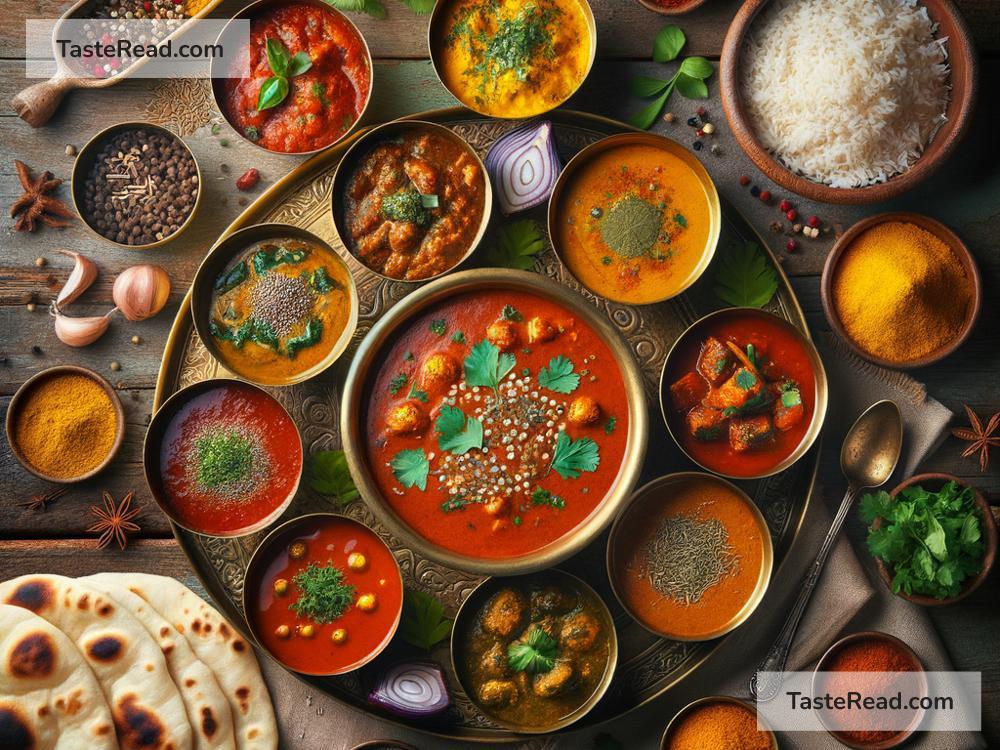The Evolution of Indian Curry: A Journey Through Flavor and History
Indian curry is more than just food—it’s a celebration of culture, history, and the art of mixing spices. Over centuries, this beloved dish has evolved in fascinating ways. From humble beginnings in ancient kitchens to its global rise as a culinary favorite, curry represents the essence of India’s rich heritage. Let’s take a closer look at how Indian curry transformed over time.
What Is Indian Curry?
Before getting into its history, let’s understand what curry is. The word “curry” is often used to describe a dish with a spiced sauce. It typically includes vegetables, meat, or seafood cooked with a blend of spices like turmeric, cumin, coriander, and chili. The result is a flavorful and aromatic meal that varies based on region and tradition.
Interestingly, the word “curry” is not originally Indian. It likely comes from the Tamil word “kari,” meaning sauce or gravy. When Europeans arrived in India, they used “curry” as an umbrella term for spiced dishes, much like how pasta represents various dishes in Italian cuisine.
Ancient Roots of Curry in India
The story of Indian curry begins thousands of years ago during the Indus Valley Civilization (around 2500 BCE). Archeologists found evidence of people using mortar and pestle to grind spices like mustard seeds and turmeric. Early curries weren’t as complex as the ones we eat today, but they were packed with flavor. These ancient recipes often included simple ingredients such as garlic, ginger, and black pepper.
As travelers and traders arrived in India, they brought new influences, and locals incorporated these into their food. Over time, regional cuisines began to evolve, with distinct curries in northern, southern, eastern, and western India.
The Influence of Invaders and Traders
The evolution of Indian curry accelerated during the medieval period. Invaders like the Mughals played a significant role in shaping Indian cuisine. The Mughal Empire, which ruled large parts of India from the 16th to 18th century, brought Persian and Central Asian cooking techniques to the subcontinent. Rich ingredients such as cream, nuts, saffron, and dried fruits were added to curries, creating dishes like Korma and Butter Chicken.
At the same time, India became a hub for global trade, known as the land of spices. Portuguese traders introduced chili peppers in the 15th century, forever changing Indian cuisine. Before that, Indian curries were spiced with black pepper for heat. Today, chili is one of the defining features of many curries.
Regional Flavors of Curry in India
One of the most fascinating aspects of Indian curry is how it differs across the country. India has diverse climates, cultures, and traditions, which gave rise to unique curry styles.
-
Northern Indian Curries: These curries are often creamy and rich, with ingredients like yogurt, butter, and milk. Examples include Paneer Butter Masala, Rogan Josh, and Dal Makhani. Wheat-based bread like naan and roti are commonly paired with these dishes.
-
Southern Indian Curries: Southern curries are famous for their bold flavors, coconut milk, and tamarind. Dishes like Sambhar, Chettinad Chicken, and Kerala Fish Curry are highlights. Rice is the staple accompaniment in the South.
-
Eastern Indian Curries: Eastern India features curries that are lighter and often focus on seafood. Mustard seeds and mustard oil are unique flavors in this region’s cooking, including dishes like Machher Jhol (Bengali fish curry).
-
Western Indian Curries: Western India boasts colorful curries and distinct spice blends. From the fiery Kolhapuri curry of Maharashtra to the sweet-and-spicy Gujarati dal, this region has something for every palate.
Curry Goes Global
Indian curry started making waves around the world through British colonization and migration. When the British ruled India, they fell in love with curry and introduced it to their homeland. Dishes like “curry and rice” became a staple in British cuisine, eventually leading to the creation of Anglo-Indian dishes like Chicken Tikka Masala.
Indian immigrants in other countries spread their culinary traditions, giving rise to new adaptations of curry. In Japan, “kare” became a mild and sweet take on Indian curry, served with rice. Southeast Asia embraced Indian spices in their own ways, leading to dishes like Malaysian chicken curry and Thai yellow curry.
Today, curry is enjoyed in restaurants and homes worldwide, symbolizing the universal love for Indian flavors.
Modern Innovations
In modern times, chefs and home cooks constantly reinvent Indian curry. Health-conscious recipes use less oil or cream, while fusion curries blend Indian spices with other cuisines like Italian or Mexican. Vegan curries, gluten-free options, and quirky creations like curry-flavored pizzas show the adaptability of this iconic dish.
Technology has also made curry more accessible. Ready-made spice mixes and curry pastes allow people to create authentic Indian dishes in their kitchens without extensive preparation.
Final Thoughts
The evolution of Indian curry reflects the beauty of cultural exchange and the creativity of generations. From ancient spices to modern fusion dishes, curry continues to thrive as a symbol of India’s culinary excellence. Whether you’re enjoying a creamy Butter Chicken or a fiery Vindaloo, remember that every bite carries the history of a dish that has traveled across time and continents.
So next time you savor a bowl of curry, celebrate its incredible journey—and dive into its rich blend of flavors with joy!

